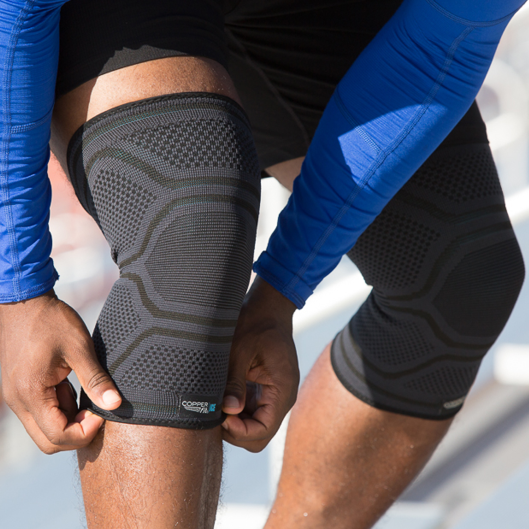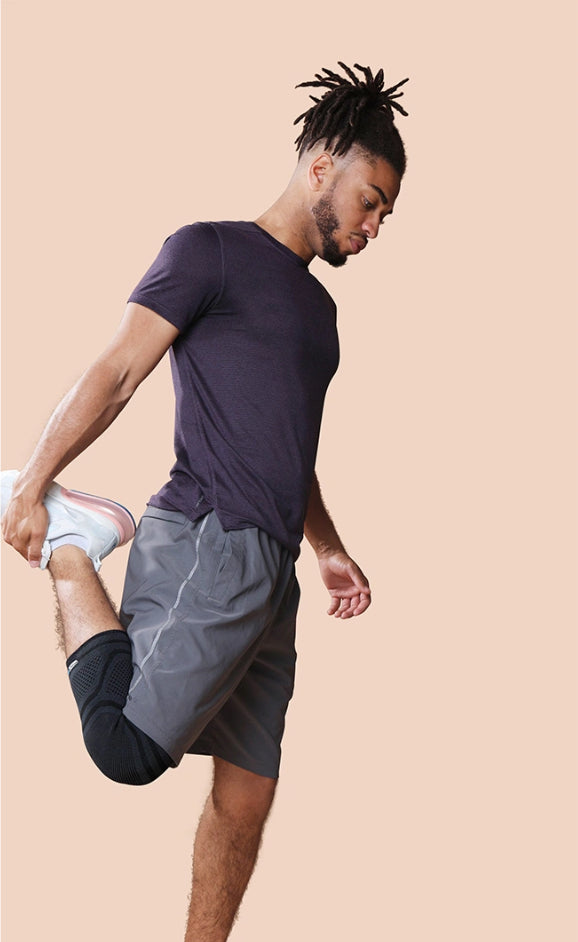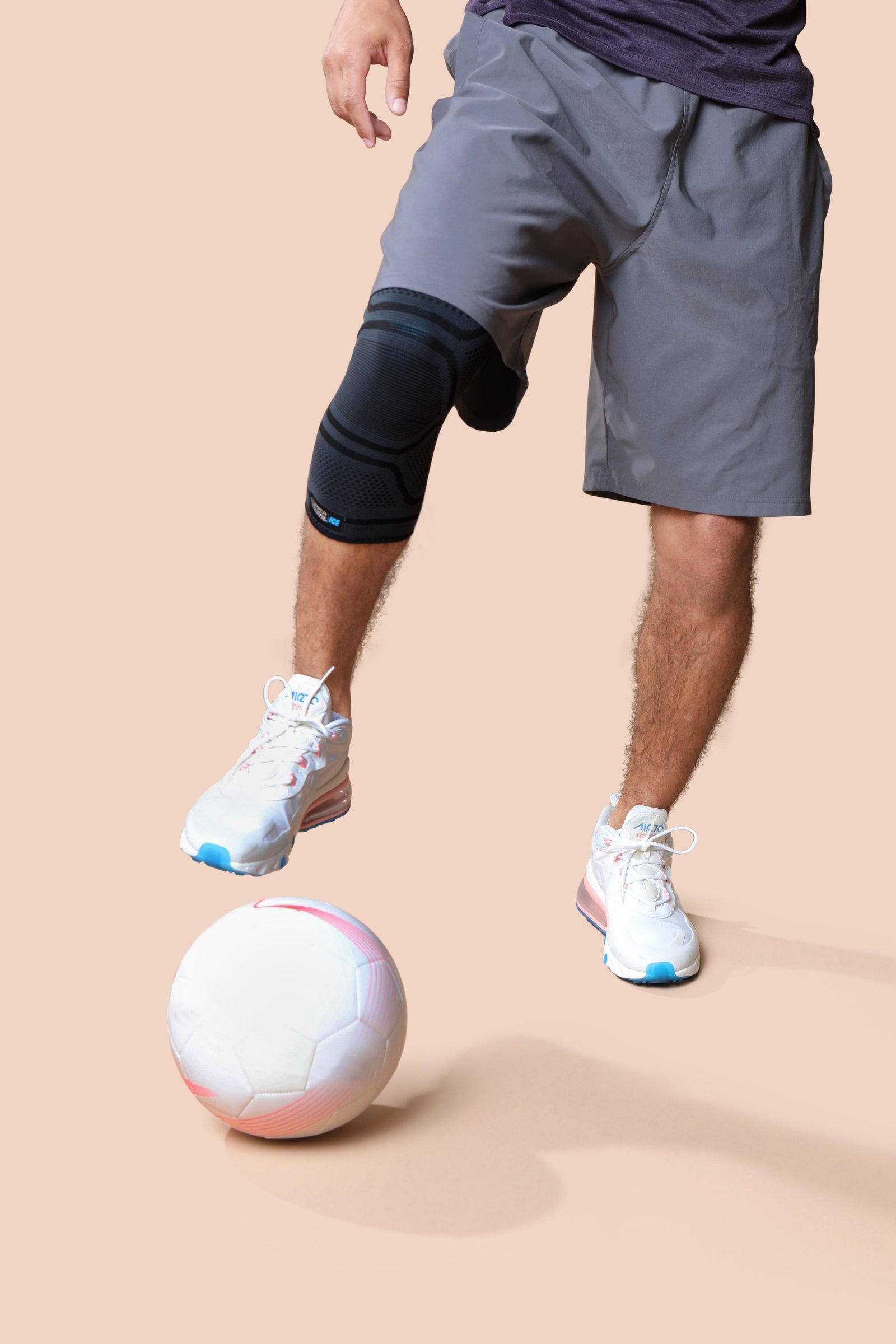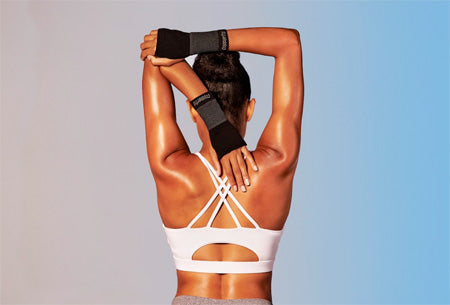
Whether you're an athlete, recovering from a knee injury, or dealing with chronic knee pain, finding the right support can make a world of difference. Knee braces are designed to provide stability, reduce discomfort, and aid recovery. But with so many types on the market, choosing the right one can be a daunting task.
This guide will give you a helpful overview of knee braces, helping you understand the different types and their uses. By the end, you'll be equipped with the knowledge to make an informed decision that best suits your needs.
Why Do People Use Knee Braces?
Knee braces serve a multitude of purposes and are used by a wide variety of people for different reasons.
Injury Recovery
One of the most common reasons people use knee braces is for injury recovery. After a knee injury, such as a ligament tear or sprain, a brace can provide much-needed stability, helping to maintain alignment and support the healing process. The brace works to protect the injured area, reducing the risk of further damage and promoting recovery.
Discomfort Relief
In addition to injury recovery, knee braces are often used for relief from discomfort. A knee brace can help support the knee joint, soothing discomfort and aiding mobility.
General Support
Furthermore, knee braces are extensively used among athletes and individuals who lead an active lifestyle. They provide support during physical activities, helping to prevent potential injuries.
Whether you're running a marathon, playing a soccer match, or lifting weights at the gym, a knee brace can offer the extra support your knee needs to perform these activities while minimizing the risk of injury.
In essence, knee braces are a versatile tool in promoting knee health, providing support and stability, aiding in injury recovery, and helping to manage discomfort. They play a crucial role in helping individuals maintain their activity levels and lead a healthier, active lifestyle.
What Factors Should You Consider When Choosing a Knee Brace?
Choosing a knee brace is not a one-size-fits-all decision. Several factors should be considered to ensure you select the right one for your needs.
- Type ofInjury or Pain: The nature of your knee problem plays a significant role in the type of brace you need. For instance, some braces are designed to support specific ligaments, while others are better suited for managing discomfort.
- Activity Level: Your lifestyle and level of physical activity also matter. If you're highly active, you might need a brace that offers maximum support without restricting movement. On the other hand, if your activity level is low, a simple knee sleeve might suffice.
- Material: Knee braces come in various materials, each with its own set of benefits. Some people might prefer a breathable fabric for comfort, while others might need a more rigid material for maximum support.
- Size and Comfort: A knee brace should fit well and feel comfortable. An ill-fitting brace can do more harm than good, causing discomfort and even worsening knee problems.
By considering these factors, you can narrow down your options and choose a knee brace that will effectively support your knee health.
What Are the Different Types of Knee Braces?
Understanding the different types of knee braces can help you make an informed decision.
Here's a breakdown:
- Prophylactic Braces: Designed to protect the knees from injuries during contact sports like football, prophylactic braces are a popular choice among athletes. They help maintain the stability of the knee while allowing a good range of motion.
- Functional Braces: These braces are typically used after a knee injury has occurred. Functional braces provide support to the injured knee and aid in the recovery process. They're designed to control knee movement while the injured ligament heals.
- Rehabilitative Braces: Rehabilitative braces limit harmful knee movement while a knee injury heals. They provide a controlled motion range and are often used after surgery or a severe injury.
- Unloader/Offloader Braces: These are typically used for people with arthritis in their knees. Unloader braces are designed to shift weight from the affected area of the knee to a healthier area, reducing pain and improving function.
- Knee Sleeves: While not technically a brace, knee sleeves provide compression and can help soothe discomfort and swelling. They're often used by athletes and active individuals for support during physical activities.
How Do I Properly Wear and Care for a Knee Brace?
Ensuring that your knee brace is worn correctly and well-maintained is crucial for its effectiveness and longevity.
Here are some detailed tips:
Wearing Your Knee Brace
A knee brace should fit snugly around your knee, but it should not be so tight that it restricts blood flow or causes discomfort. Ideally, it should feel like a supportive, comfortable grip.
The brace should cover the right area—if it's positioned too high or too low, it won't provide the support where you need it most. If your brace comes with straps, make sure they're securely fastened but are not digging into your skin. The goal is to provide optimum support while maintaining comfort.
Caring for Your Knee Brace
Regular cleaning is essential to keep your brace in good condition. Most braces can be cleaned with mild soap and warm water.
Avoid using harsh detergents as they could degrade the material over time. After washing, ensure the brace is thoroughly dried before wearing it again. Damp braces can lead to skin irritation and discomfort. If your brace has removable parts, take them off before cleaning and dry them separately.
A well-fitted and well-cared-for knee brace can provide effective support and make a significant difference in your knee health. If you're unsure about the fit or care of your brace, don't hesitate to reach out to a healthcare professional or the Copper Fit team for guidance.
When Should You Consult a Healthcare Professional?
If your knee pain persists or worsens despite using a knee brace, it's best to consult a healthcare professional. A healthcare professional can provide a comprehensive evaluation of your knee problem and guide you toward a more personalized treatment plan. They can also advise on the correct use of a knee brace as part of your overall treatment strategy.
How Can Copper Fit Products Support Your Knee Health?
Copper Fit offers a comprehensive range of knee supports designed with your comfort and mobility in mind. Each of our products is thoughtfully designed to maintain the stability of your knee, whether you're recovering from an injury or seeking additional support during physical activities.
Our knee braces are made with high-quality materials that ensure durability and comfort. For instance, our knee sleeves are designed to provide a snug fit without being overly restrictive, allowing for natural movement. These can be particularly beneficial for those leading an active lifestyle, as they offer a balance between support and flexibility.
Ease of Use, Comfort, and Effectiveness
In addition to providing support, Copper Fit knee braces are also designed to be easy to use. They come with adjustable straps for a custom fit and are easy to put on and take off. This means you can adjust your brace for maximum comfort and effectiveness.
Moreover, Copper Fit knee braces are designed to reduce odor, thanks to the copper-infused fabric. This makes our braces ideal for extended wear, even during high-intensity activities.
Always consult with a healthcare professional for a comprehensive treatment plan if you're experiencing persistent discomfort. Our mission at Copper Fit is to support your comfort and recovery, helping you maintain an active lifestyle without compromising on your knee health.
Supporting Your Fitness, One Knee at a Time
Understanding the different types of knee braces and their uses is crucial in choosing the right support for your knee health. Whether you're an athlete seeking injury prevention, someone dealing with chronic knee discomfort, or someone recovering from an injury, the right knee brace can make a significant difference.
While knee braces like those from Copper Fit are designed to maintain and support your knee, they're not a cure-all solution. Persistent or severe knee issues should always be evaluated by a healthcare professional to ensure a comprehensive and effective treatment plan.
At Copper Fit, our mission is to support your comfort and recovery, empowering you to stay active and feel your best every day. We're here to provide products that support you, but we always recommend consulting a healthcare professional for personalized advice and treatment.
Sources:
Life After a Knee Injury | Sports Medicine Oregon: Orthopedic Surgery
Knee Pain Symptoms & Injuries | Utah





